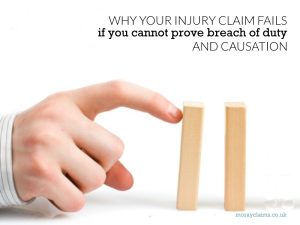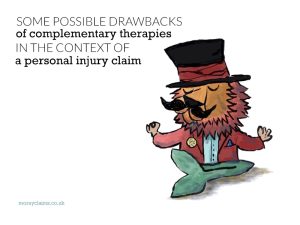When Andrew Kay was 2 years old, he contracted meningitis. It is a dangerous medical condition, causing inflammation of membranes in the central nervous system, and affecting the brain. On 28 November 1975, Andrew was admitted to Seafield Children’s Hospital in Ayr, seriously ill. As part of his treatment, he received an injection of penicillin. The problem was that, by mistake, he was given a massive overdose of penicillin – receiving about 30 (thirty) times the correct dose. In such a quantity, the penicillin was toxic and it caused Andrew to suffer convulsions. He later developed paralysis down one side of his body, though it was short-lived. Andrew recovered from his life-threatening illness, but he was left profoundly deaf. He also had significant learning difficulties. A claim for compensation From 1978, Andrew’s Dad, partly conducting the case himself, made a compensation claim on behalf of his son, raising an action in the Court of Session. Before the judge (in 1984), the Continue Reading
Negligence: what is it?
Accidents which are no one's fault ... An accident is an event which could not reasonably have been foreseen by anyone and for which no one should be held responsible. If your injury is the result of such a mishap - a ‘pure’ accident - you will not be able to make a successful claim for compensation. ... Accidents which are someone's fault The modern idea of negligence dates from the 1930s. Negligence: what is it ? The basic definition of negligence that lawyers now use comes from the Scottish case of Donoghue –v- Stevenson. As a result of that case and other later cases, the law places defined limits on the classes of person who can claim and the types of injury for which they can claim. If you are going to be able to claim successfully, the person who injured you has to have been in such a position that they ought to have had you in mind when considering the possible impact of their actions in the circumstances. In practice, from the point of view of the person owing the duty of Continue Reading
Free of charge help with your personal injury claim from a solicitor (even if your claim succeeds)?
It’s natural to be suspicious if someone seems to be offering you something valuable in return for nothing. We are all conditioned to think that if something sounds “too good to be true”, then it must in fact be too good to be true. There are times when we’re vulnerable to letting our guard down – for example, if it’s something we really want – and system tools have evolved to provide some protection. For example, many spam filters will catch emails with “free” in the subject line because use of that one word alone indicates dodgy intentions on the part of the sender. But just because a service is offered as 'provided free of charge' to you, it's not necessarily dodgy as long as the service provider is getting by some other method - such as happens with solicitors working for claimants with personal injury claims. We invite people to ask us questions via our Google Business page. You can ask a question of Moray Claims on Google Business here. You can see the questions Continue Reading
Complementary therapies in personal injury compensation claims
In 2007, I was diagnosed with Lyme Disease, a bacteriological infection you get from deer ticks. Some of the main symptoms were tiredness , lethargy and “brain fog”. I was treated with antibiotics over a period of about 9 months, some oral, some intravenous. I recovered but had some annoying residual symptoms, including neck stiffness and pain. I tried a treatment from complementary medicine, called craniosacral therapy, through Healthworks in Forres, and got a lot of benefit from it. I consider my recovery was due to a combination of conventional and complementary medicine. I am a believer in the benefits of complementary therapies. But I relied primarily on conventional medicine and at all times after I had been diagnosed by my GP and referred for expert opinion, I was under the care of a consultant in the Infectious Diseases department of Aberdeen Royal Infirmary. Complementary therapies have a lot of advantages but in the context of a personal injury claim Continue Reading



